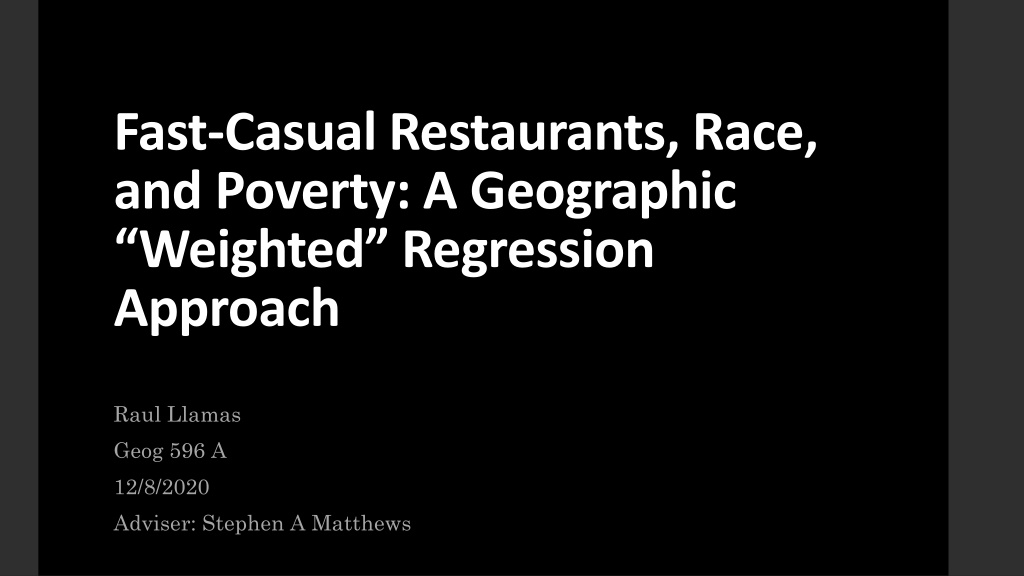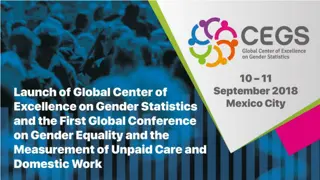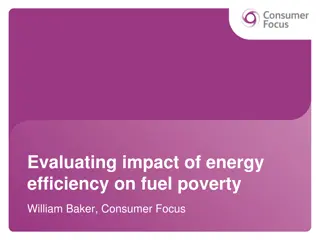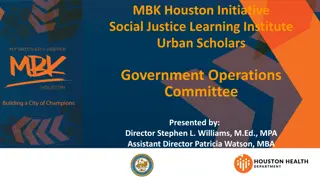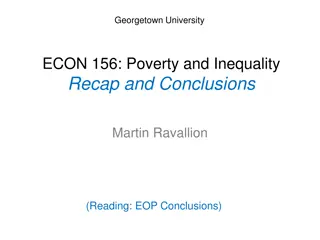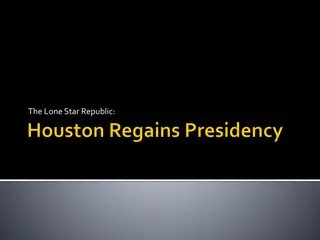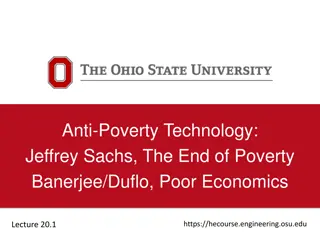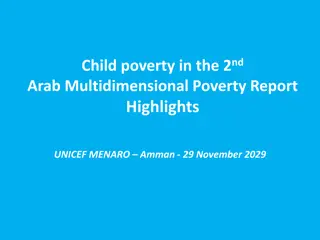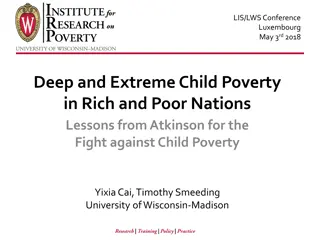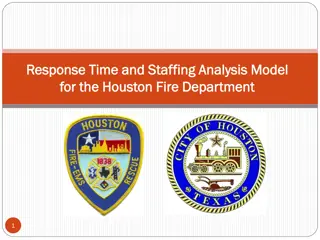Fast-Casual Restaurants, Race, and Poverty: An Analysis of Chipotle Locations in Houston
Exploring the impact of fast-casual restaurants like Chipotle on low-income and minority populations using geographic regression analysis in the Houston metropolitan area. The study investigates if these restaurants exclude certain demographics and the potential implications on community health. Utilizing data from Chipotle locations and the American Community Survey, the research aims to provide insights into the relationship between fast-casual dining, demographics, and economic variables.
Download Presentation

Please find below an Image/Link to download the presentation.
The content on the website is provided AS IS for your information and personal use only. It may not be sold, licensed, or shared on other websites without obtaining consent from the author. Download presentation by click this link. If you encounter any issues during the download, it is possible that the publisher has removed the file from their server.
E N D
Presentation Transcript
Fast-Casual Restaurants, Race, and Poverty: A Geographic Weighted Regression Approach Raul Llamas Geog 596 A 12/8/2020 Adviser: Stephen A Matthews
Problem Are fast casual restaurants excluding low income and minority populations?
Background - Fast-food restaurants correlated with unhealthy outcomes. - Location of fast-food restaurants and health of the communities within them. - Income levels and race - Lack of grocery stores and food deserts Figure 1. Map of Fast-Food Restaurants in New Orleans (Block, 2004)
Fast-Casual Restaurants Fast Casual Definition Around $10 Counter Order Fresher Ingredients Gained popularity in the past 20 years, with vast growth in the past 10 years Have survived during COVID Low cost, built for take out Chipotle Over 2500 locations in the United States National Top of sales Modern Figure 2. Infographic of Current Fast-Casual Economic Outlook (Technavio, 2020)
Background Fast casual restaurants have not been included in many analysis regarding race or poverty, have mostly focused on grocery stores in terms of food deserts and fast- food restaurants. - Fast Casual restaurants offer a healthier option of instant food with not much of a rise in cost - Inequality of healthier options possible in these areas. -
Objective Using geographic regression analysis, I will study the most popular fast casual restaurant, Chipotle, and the demographics of the areas that they are in. This study will focus on the Houston metropolitan area at the ZIP Code scale.
Data Chipotle Restaurant locations American Community Survey 2014 - 2018 Variety of demographic information across multiple years. Economic and Demographic variables Multi collinearity Index Figure 3. Screenshot of American Community Survey Economic Data
Methods Moran s I and Local Moran s I Multiscale Geographic Weighted Regression Varies across space Allows for a more nuanced look Relatively New Figure 4. Map of Health Variables in Greater Phoenix Area (Oshan, 2020)
Challenges Nighttime population vs. Daytime population Margin of Error Temporal data issues
Results Correlation between higher income areas and a presence of a Chipotle Correlation between white population and the presence of a Chipotle Correlation between minority populations and the absence of the restaurant. Correlation between the busy areas and the presence of the restaurant
Timeline Dec - March 2021 o Gather and assemble data into proper format o Explore indexing literature to be able to properly create poverty index and busy variable. March - April 2021 o Run analysis o Write report o Analyze results May 2021 o Develop presentation from report o Submit Report May 2021-? o Present Capstone Project
References Block, J. P., Scribner, R. A., & DeSalvo, K. B. (2004). Fast food, race/ethnicity, and income: a geographic analysis. American journal of preventive medicine, 27(3), 211-217. Carman, T. (2019, December 31). Why fast-casual restaurants became the decade's most important food trend. Retrieved December 07, 2020, from https://www.washingtonpost.com/news/voraciously/wp/2019/12/31/why-fast-casual-restaurants-became-the-decades-most-important-food-trend/ Fotheringham, A. S., Yang, W., & Kang, W. (2017). Multiscale geographically weighted regression (MGWR). Annals of the American Association of Geographers, 107(6), 1247-1265. Oshan, T. M., Li, Z., Kang, W., Wolf, L. J., & Fotheringham, A. S. (2019). mgwr: A Python implementation of multiscale geographically weighted regression for investigating process spatial heterogeneity and scale. ISPRS International Journal of Geo-Information, 8(6), 269. Oshan, T. M., Smith, J. P., & Fotheringham, A. S. (2020). Targeting the spatial context of obesity determinants via multiscale geographically weighted regression. International Journal of Health Geographics, 19, 1-17. Powell, L. M., Chaloupka, F. J., & Bao, Y. (2007). The availability of fast-food and full-service restaurants in the United States: associations with neighborhood characteristics. American journal of preventive medicine, 33(4), S240-S245. TechNavio. Fast Casual Restaurants Market by Cuisine Type and Geography - Forecast and Analysis 2020-2024. (n.d.). Retrieved from https://www.technavio.com/report/fast-casual-restaurants-market-industry-analysis#:~:text=The fast casual restaurants market,year-over-year growth. Walker, R. E., Keane, C. R., & Burke, J. G. (2010). Disparities and access to healthy food in the United States: A review of food deserts literature. Health & place, 16(5), 876-884. Walker, R., & Merkley, G. (2017). Chipotle Mexican grill: Food with integrity?. Kellogg School of Management. Zenk, S. N., Lachance, L. L., Schulz, A. J., Mentz, G., Kannan, S., & Ridella, W. (2009). Neighborhood retail food environment and fruit and vegetable intake in a multiethnic urban population. American Journal of Health Promotion, 23(4), 255-264.
